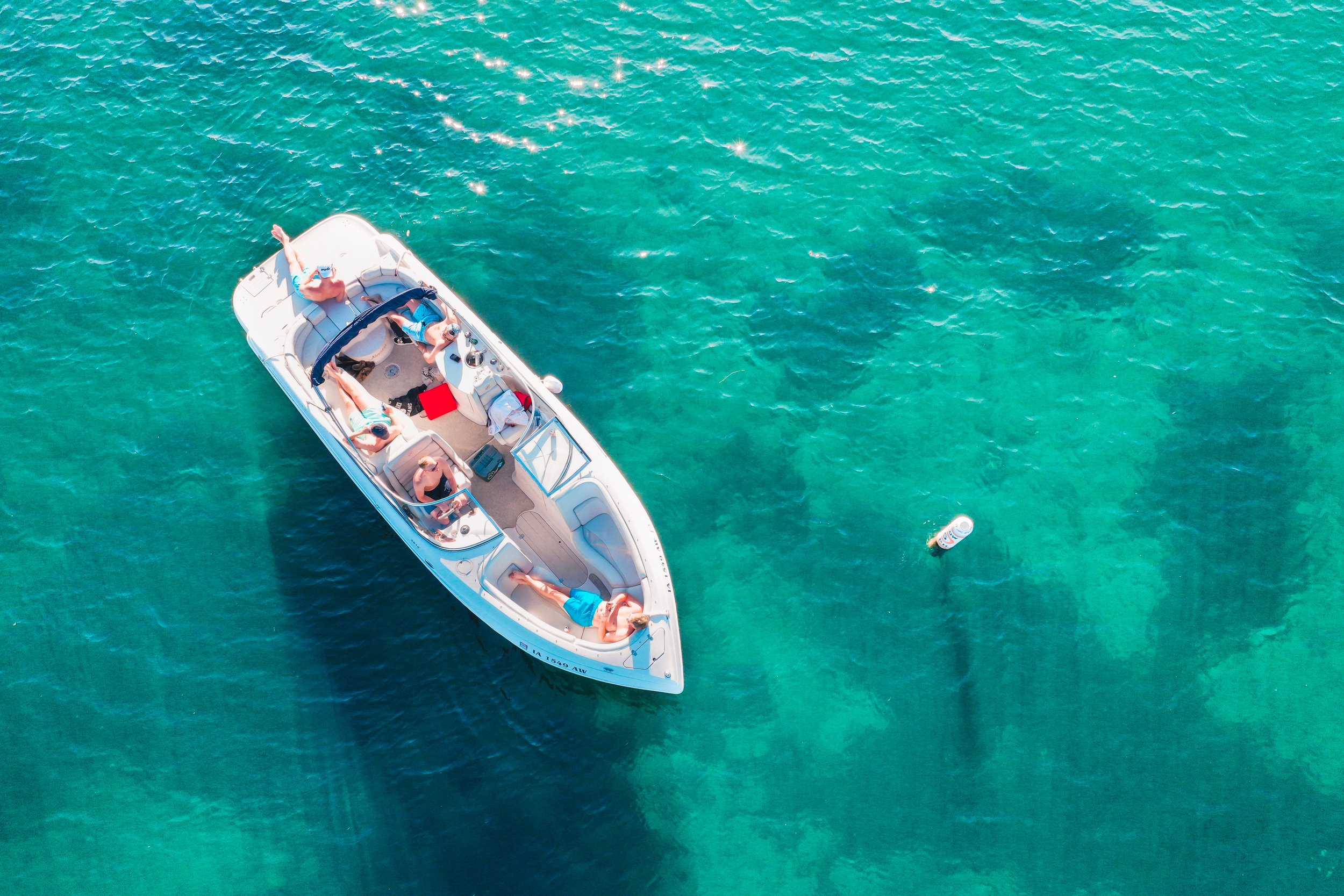ANCHORING: A STEP-BY-STEP GUIDE
One of the most basic misconceptions about anchoring is that you simply rely on the weight of the anchor to hold you in place, but that is not the case. A great big dead weight is the theory behind moorings, but lugging around that sort of weight just isn’t feasible on your average boat. Instead, anchors are designed to dig into the seabed and work with a length of chain to hold a boat in place. Here's our simple guide to anchoring.
Choosing anchor gear
There’s no one size fits all solution when it comes to anchoring equipment — or tackle as it’s known. Small boats will get away with a light anchor with a short length of chain attached to rope, but bigger boats will require bigger anchors and heavy chain that will need to be deployed with a winch, preferably an electric one.
Manufacturers will provide a guide as to the length and weight of boat that their anchor is suited for, but to give you a general idea an anchor of around 20kg is going to be appropriate for a 10-metre boat. There are a number of specialty anchors that should be used for different seabed types, but the most common designs are Plough (also known as CQR), Bruce or SARCA (Sand and Reef Combination Anchor).
Setting anchor
Another anchoring misconception is that you can simply arrive, stop and dump your anchor and chain. For an anchor to hold effectively, you need to come to a stop, head to wind and then let the anchor and chain out in a controlled manner as you slowly drift or motor backwards, digging the anchor in and laying the chain in a nice line along the bottom. When you’ve done this, don’t rush off right away; find bearings on shore and watch to check that the anchor is holding.
The basic rule of thumb is that you want to achieve a scope or ratio of anchor chain 5 times the depth of the water. You might get away with a little less in perfect conditions, but when things are looking less than pleasant you’ll need to aim for a higher multiple. Remember to factor the tidal range into this calculation, of course, so your boat doesn’t end up on the bottom.
The perfect anchorage
You don’t want to be setting anchor in a protected coral or seabed, so check your chart and any environmental zoning. To add insult to injury, an anchor dropped on coral is also likely to catch and become difficult to retrieve causing further damage as you do so. Parks and Wildlife often provide moorings in areas of environmental sensitivity.
You’ll also need to check the forecast for changing weather conditions that might see your lovely protected anchorage become a surf break or just uncomfortable. Your ‘swing room’ (the arc you may drift on chain) will also be affected by changing weather and current. At first, you might be sitting in a lovely roomy bit of water, but think about what’s going to happen when you’re pulling back on your anchor chain in the other direction. Will you find yourself nudging up to a rock or neighbouring boat that might not appreciate your encroaching on their carefully planned swing room?
Anchoring accessories
Once your anchor and chain are beautifully laid out, you might want to think about a snubber or bridle which will take the load off the anchor winch and may help the boat sit more comfortably at anchor. A bridle will be essential on multihulls which are prone to skidding around erratically on anchor.
In situations where you’re particularly worried about holding or have limited swing room, you could consider deploying a second anchor off the bow or stern. But I’d encourage you to really think through retrieval strategies and possible tangles before giving this a go.
There’s also plenty of technology on hand to make anchoring easier. If you have a chart plotter onboard, there’s every chance it has an option to set an anchor alarm to warn you if your anchor is dragging. There’s also a variety of apps that will do the same thing. Keeping it simple: one of the best things you can do is to drop a waypoint right on top of your anchor or keep your chartplotter tracking on to monitor your swinging and having a nice visual of any drifting.



